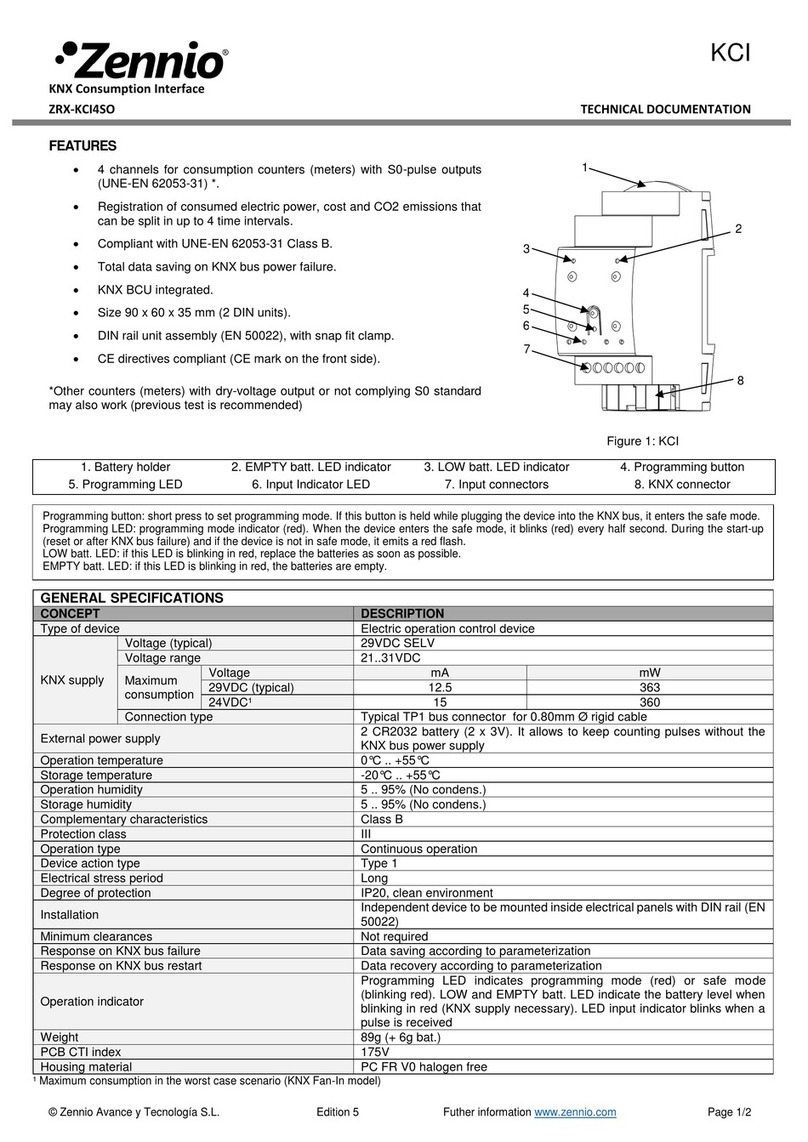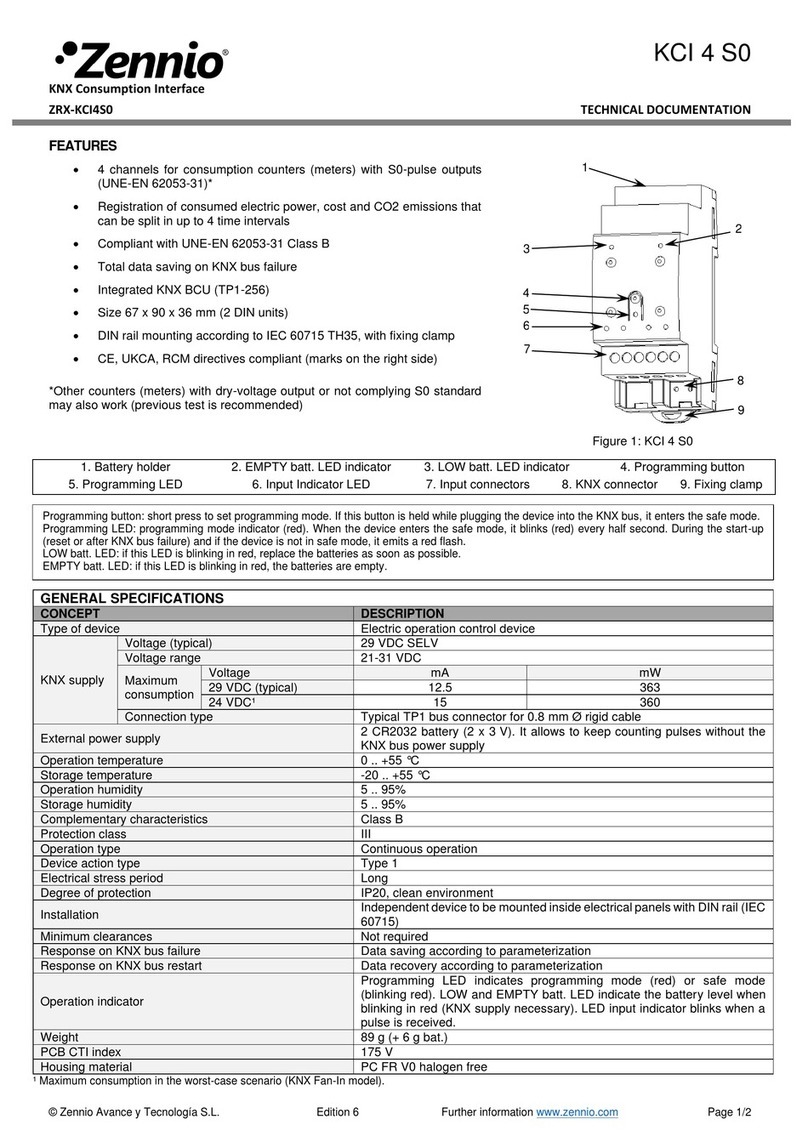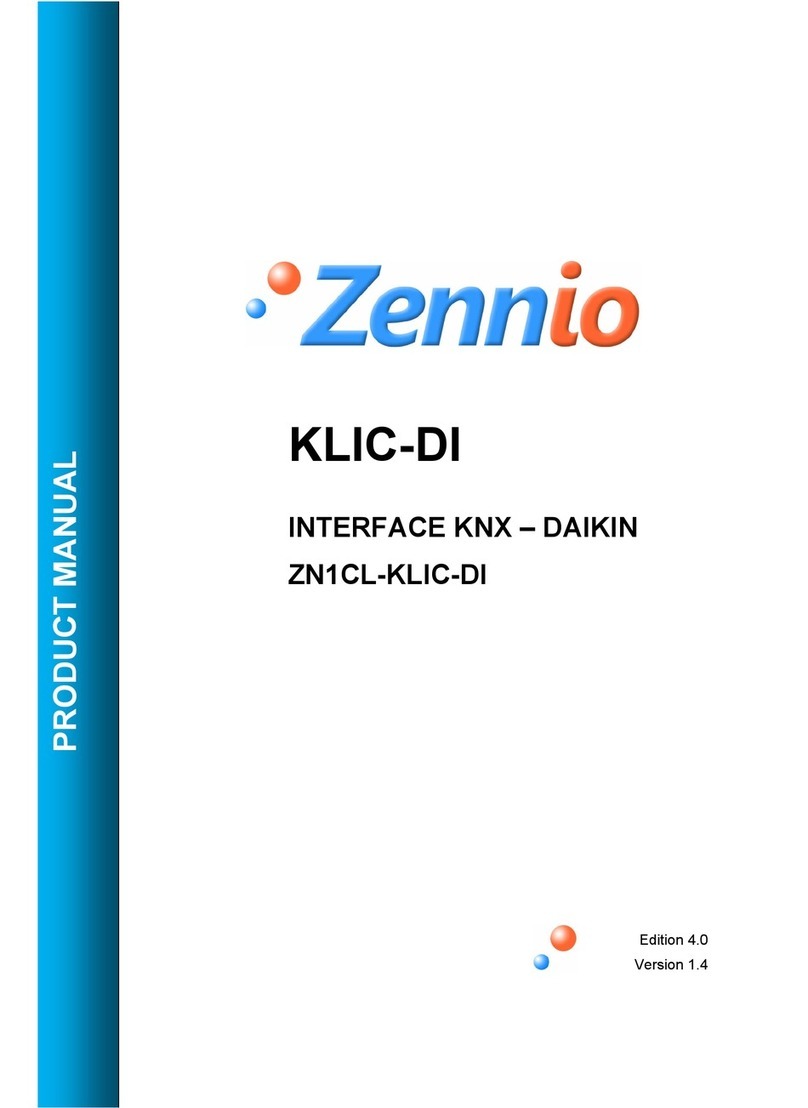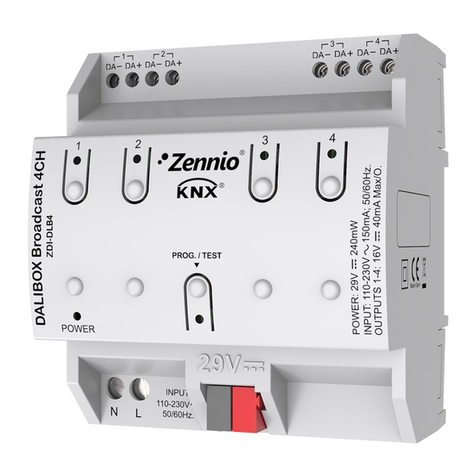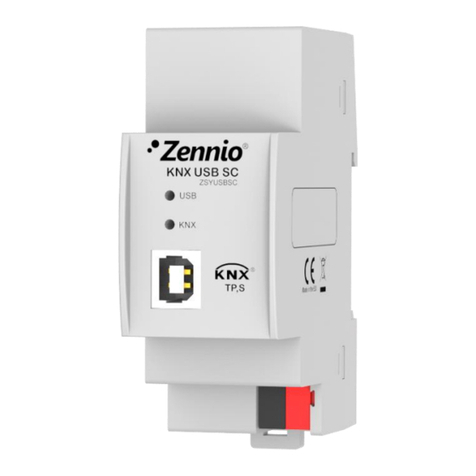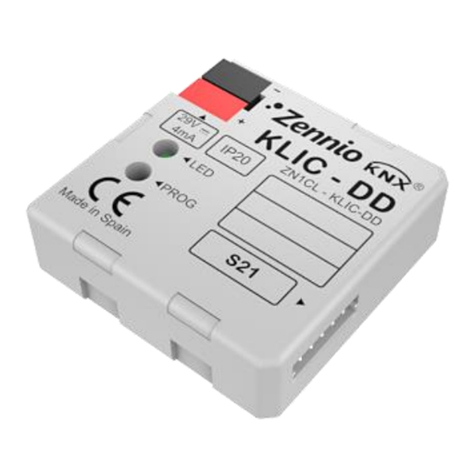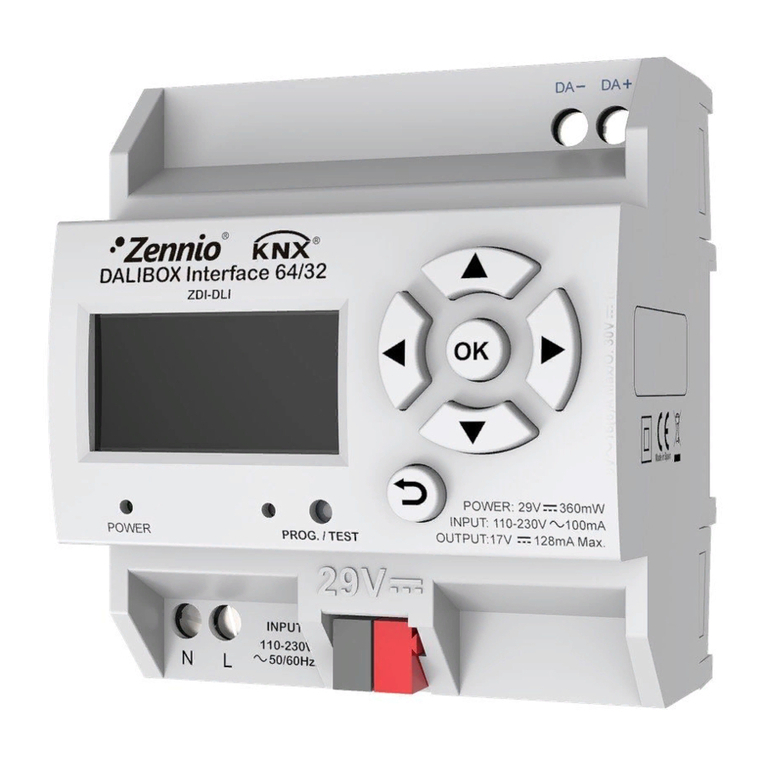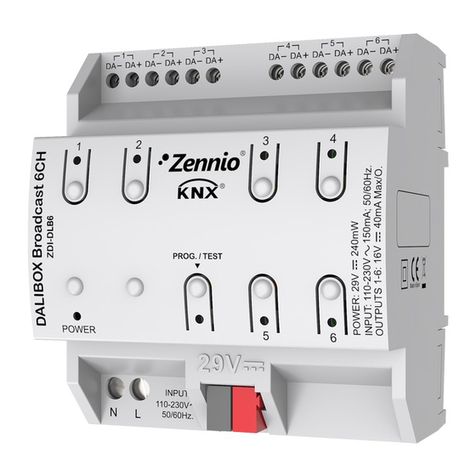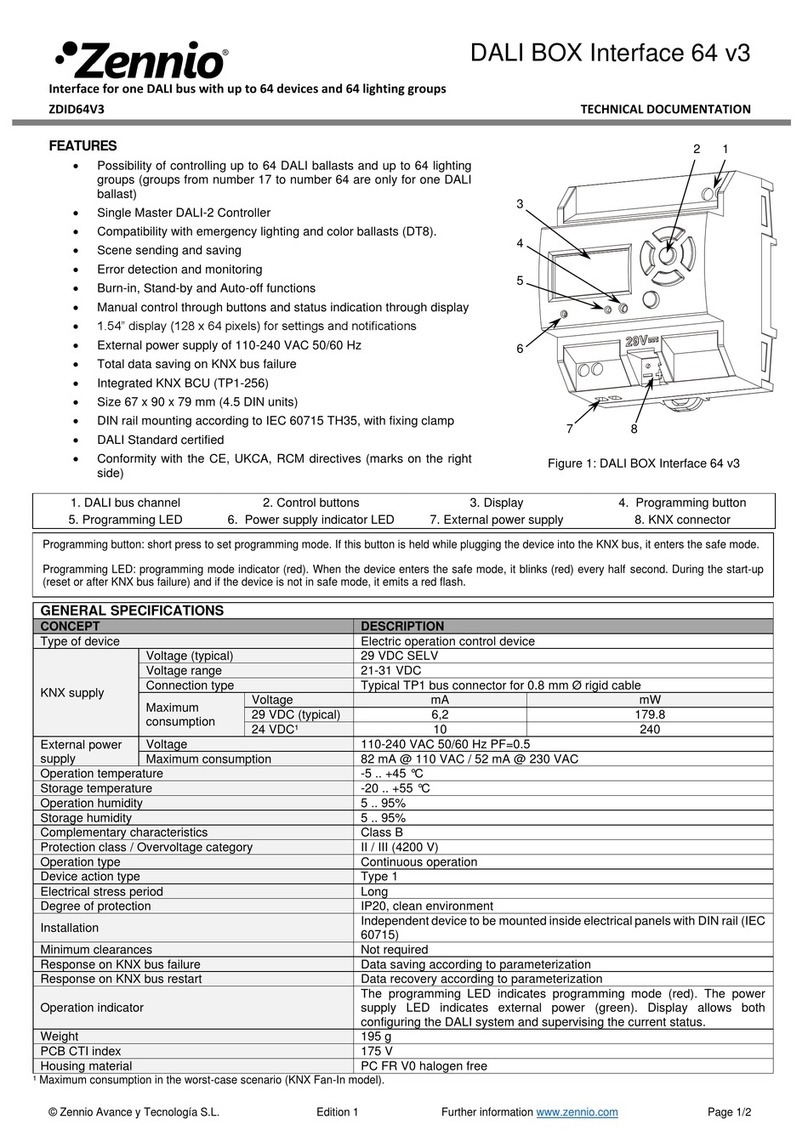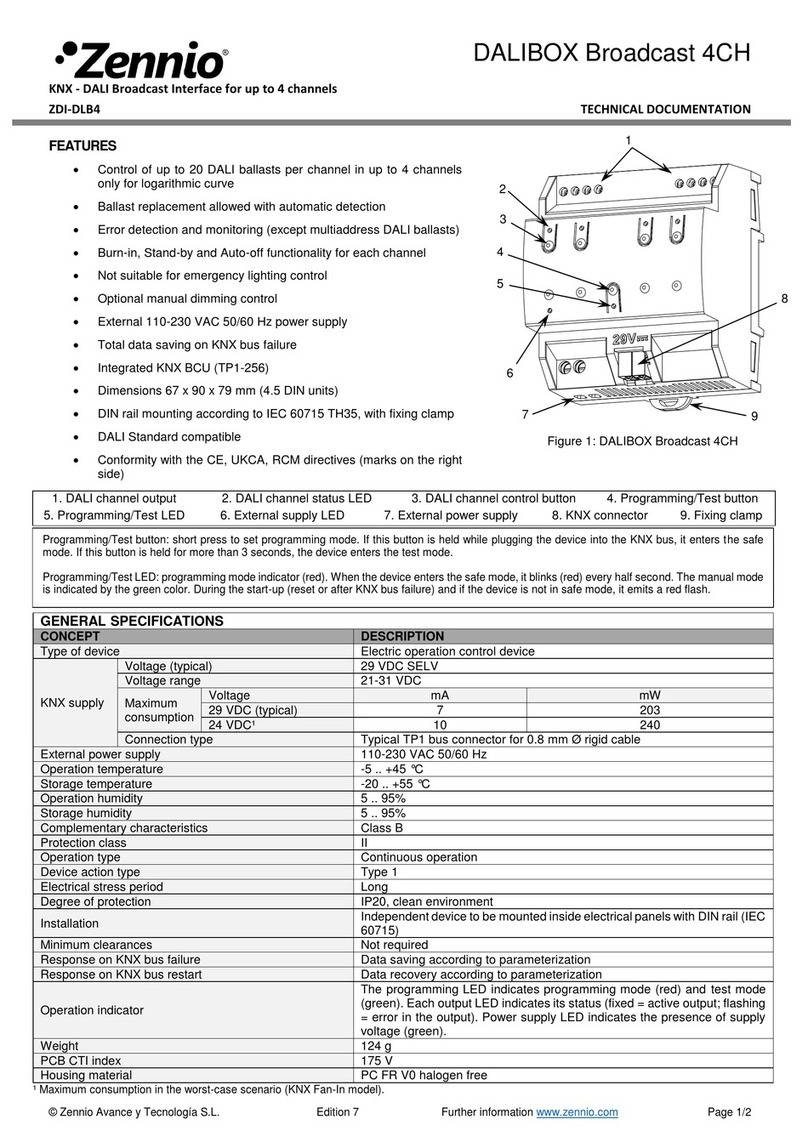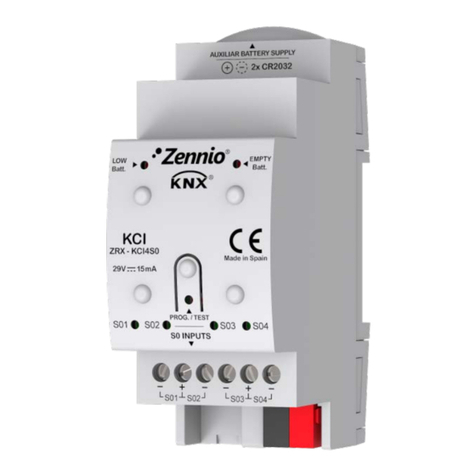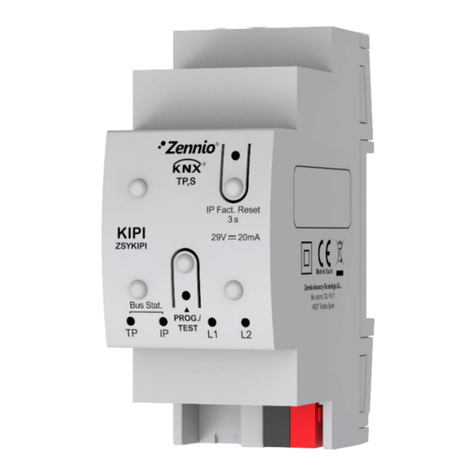
© Zennio Avance y Tecnología S.L. Edition 1 Page. 1/ 2
DALIBOX Interface 64/32
Interface for one DALI bus with up to 64 devices and 32 lighting groups
ZDI-DLI Technical Documentation
FEATURES
Possibility of controlling up to 64 DALI ballasts and up to 32 lighting groups.
Scene sending and saving.
Error detection and monitoring.
Burn-in, Stand-by and Auto-off functions.
Manual control through buttons and status indication through display.
1.54” display (128 x 64 pixels) used for setting and notifications.
External power supply of 110/230V 50/60Hz.
Total data saving on KNX bus failure.
Integrated KNX BCU.
Size 67 x 90 x 79mm (4.5 DIN units).
DIN rail assembly (EN 50022), through pressure.
DALI Standard compatible
Conformity with the CE directives.
Programming button: short button press to set programming mode. If this button is held while plugging the device to the KNX bus, it enters into safe
mode.
Programming LED: programming mode indicator (red). When the device enters into safe mode, it blinks (red) every half second. The manual mode is
indicated by the green color. During the start-up (reset or after KNX bus failure) and if the device is not in safe mode, it emits a red flash.
1.DALI bus output 2.Display 3.Control buttons4. Power supply indicator LED
5. External power supply 6. Programming indicator LED 7.Programming button 8. KNX connector
Figure 1. DALIBOX Interface 64/32
Electric operation control device
KNX
supply
Maximum
consumption
15 360
Typical bus connector TP1, 0.80mm ø
5 to 90% RH (no condensation)
5 to 90% RH (no condensation)
Complementary characteristics
Installation
Independent device to be mounted inside electrical panels with DIN rail (EN
50022).
Response on KNX bus failure
Data saving according to parameterization
Response on KNX bus restart
Data recovery according to parameterization
Operation indication
The programming LED indicates programming mode (red). The power supply LED
indicates external power (green). Display allows both configuring the DALI system
and supervising the current status.
(1)
Maximum consumption in the worst case scenario (KNX Fan-In model)
